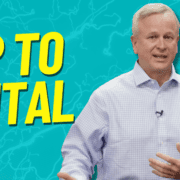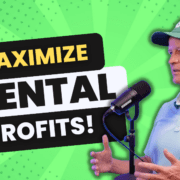What is the Best Loan for Your Fix and Flip?
Categories: Blog Posts
What is the Best Loan for Your Fix and Flip?
Today, let’s dive into a topic we talk about daily: What is the best loan for your fix and flip? Is it a hard money loan, a private loan, a bank loan, or even OPM (Other People’s Money)? Each situation is different, and it’s essential to know what works best for you. Let’s get started!
Understanding Leverage
Leverage is key in real estate investing to create wealth. Think of leverage like a tool. When used right, it helps you build faster and better. Here’s what you need to know to ensure you get the best leverage:
Consider the Cost and Value
Just like hiring a contractor, you need to look at what you’re paying for and what you’re getting. It’s not always about the cheapest option but the best value. Typically, you might hear that hard money is more expensive than private money, but let’s dig deeper to see if that’s true.
Types of Loans for Fix and Flips
Hard Money Loans
Hard money loans are popular for fix and flips because they are quick to get and don’t require perfect credit. They are usually more expensive, but they can fund faster.
Example: If you find a great deal that needs to close in a week, a hard money loan might be your best option.
Private Money Loans
Private money loans come from individual investors. These can be more flexible with terms but may take longer to secure.
Example: Your friend or a local investor might lend you money with terms you both agree on.
Bank Loans
Bank loans usually have the lowest interest rates but come with strict qualifications and a longer approval process.
Example: If you have a great credit score and plenty of time, a bank loan can save you money on interest.
Other People’s Money (OPM)
OPM can be funds from partners or investors. This type can be highly flexible but depends on your agreements with them.
Example: Partnering with an investor who puts up the cash while you manage the flip.
Factors to Consider
Speed of Funding
In real estate, speed can make or break a deal. Sellers prefer buyers who can close quickly with no hassle. So, you need to know which lender can fund the fastest.
Down Payment
Down payments can vary. With hard money, you might get 100% financing, but usually, you’ll need 10-20% down.
Example: If you’re buying a $300,000 property, a 10% down payment means you need $30,000 upfront.
Points and Interest Rates
Points are fees paid to the lender, usually as a percentage of the loan amount. Interest rates can range from 10% to 12% or more.
Example: On a $270,000 loan with 1 point, you’ll pay $2,700 upfront. At 12% interest, you’ll pay $2,700 monthly.
Additional Fees
Lenders may charge other fees like escrow fees, draw fees, underwriting, and appraisal fees. These can add up, especially on smaller loans.
Example: A $200,000 loan might come with $1,900 in fees, affecting your overall cost.
How to Choose the Best Loan
- Compare Costs: Use our free Loan Cost Optimizer tool on our website to compare lenders and see who offers the best deal.
- Check Funding Speed: Make sure your lender can close the deal quickly to avoid losing it.
- Evaluate All Fees: Look at points, interest rates, and other fees to get the full picture.
Conclusion
In sum, the best loan for your fix and flip is the one that costs you the least and funds on time. At The Cash Flow Company, our goal is to help you get the best lending options available. If you have a question or a deal to discuss, reach out to us. Visit our website, download our Loan Cost Optimizer, and compare lenders to find the best deal for you.
Watch our most recent video to discover more!










